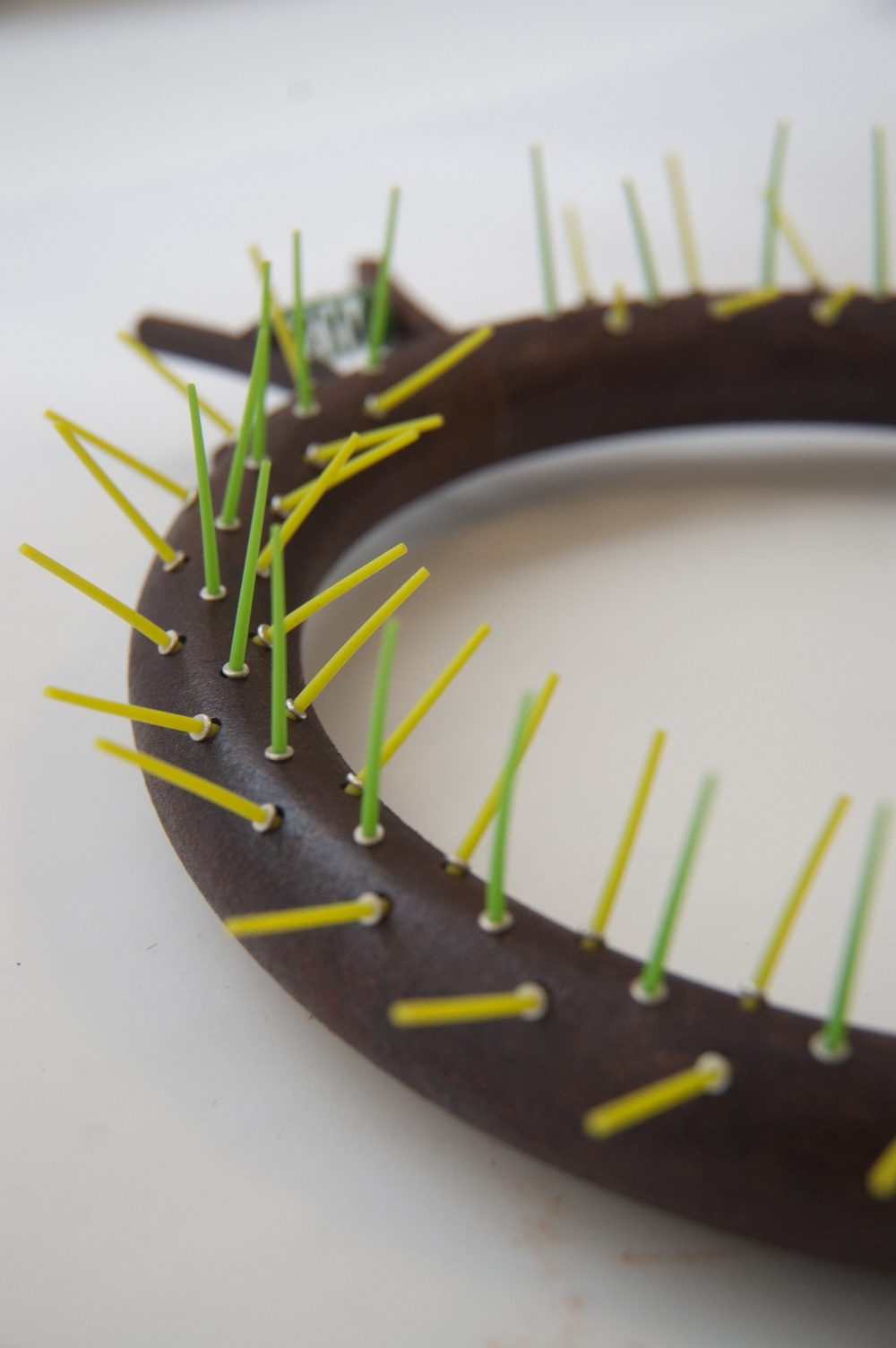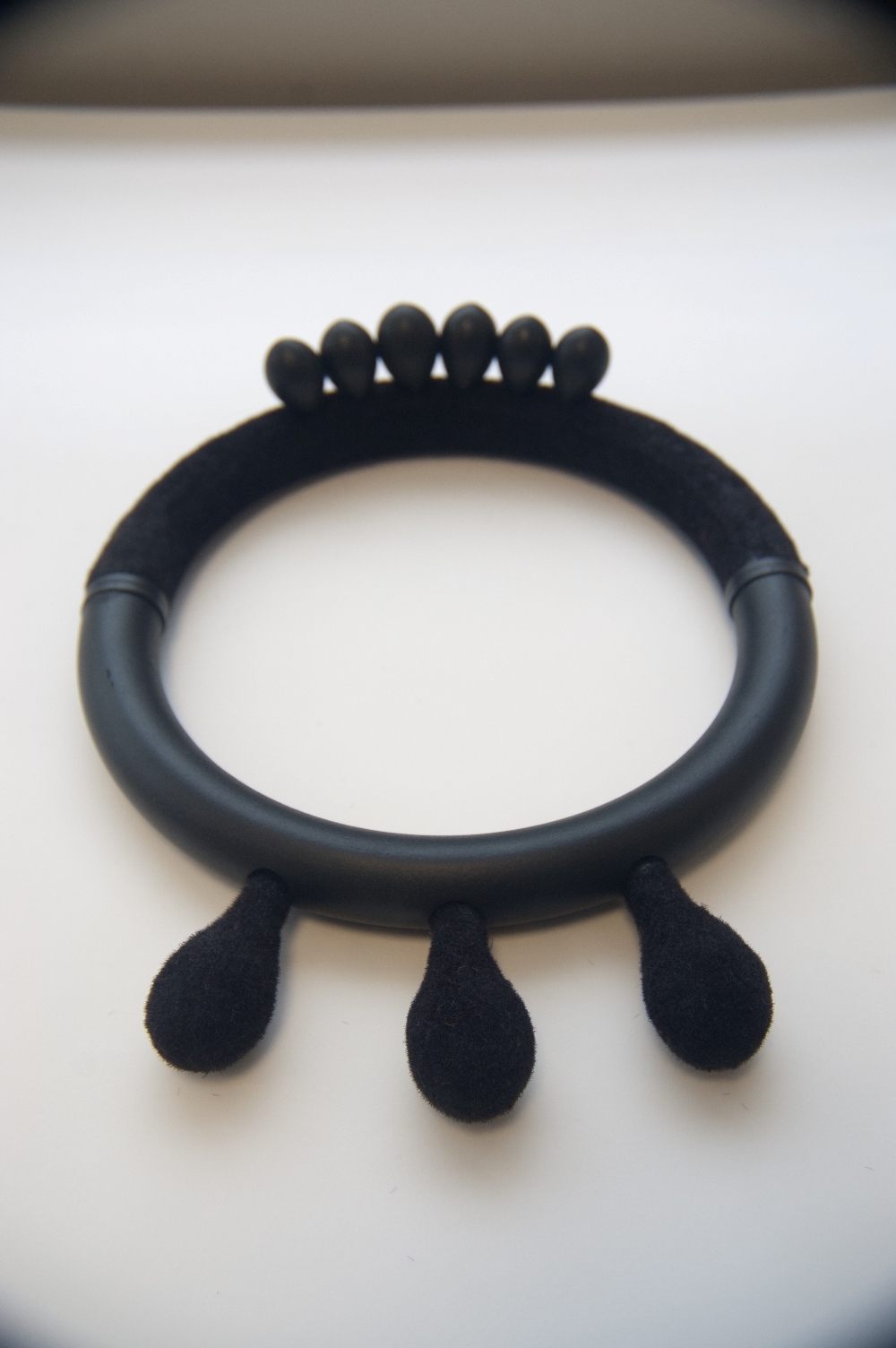2014 Award Winner Hannah Chapman

The 2014 Mark Fenn Award was presented to Hannah Chapman from Sheffield Hallam University.
Image: 'Air 1', neckpiece with in-built cooling system. Aluminium, stainless steel, 4 fans
Hannah’s work explores various methods of making art more accessible through breaking down the barriers to audience engagement.
Her pieces shown at New Designers derive from addressing anxiety and ways of relieving it. Each neckpiece offers subtle soothing, either with gentle wafts of air or vibration.
There is a sound visual unity across the collection, which is technically well made and exhibiting great details and variation.
As Hannah says; ‘these pieces are the opening statements in a conversation between artist and viewer’. I can imagine there will be many future developments in this conversation! Terry Hunt, Chair ACJ
This award is for one year's free membership to ACJ, kindly sponsored by ACJ Advisor Mark Fenn


I am a Liverpool born Artist, Jewellery maker and metalworker currently based in Sheffield. My passions lie in the observation and analysis of the way in which people interact with and respond to art in the physical and the concept. I am presently exploring this through the medium of exhibition, questioning and stretching the boundaries and definition of ‘exhibition’ to evoke, not only a response from the viewer, but an interaction which converts them from viewer to participator, a move from reception to production. My Current research revolves around breaking down the barriers to engaging potential audiences in creative practice, thus bridging the distance between artist and viewer in a bid to make art more accessible and less pretentious. My present making is a physical discussion playing with airflow, sound, texture and vibration which is focused around anxiety and performance anxiety, which I identified in my research as one of the many barriers to audience engagement. This comes in the form of a range of bold and interactive neckpieces which discuss positive and negative anxiety through either evoking or relieving the symptoms of it. Each piece is subjective to the viewer’s experience and understanding or personal familiarity of what evokes positive or negative sensations and then their reaction to this. The purpose of the neckpieces is not only to alleviate and potentially prevent anxiety in sufferers but also to illustrate to individuals who have never suffered from anxiety some of the emotions surrounding the onset of an anxiety attack.
I have recently completed a BA in metalwork and Jewellery and hope to eventually go onto postgraduate study continuing this research into engagement, accessibility and anxiety in a desire to flourish not only my own understanding and experience but also to improve the viewer’s experience and engagement with art whilst contributing to people’s understanding of mental health as a whole. My studies began in an attempt to make art more accessible through participatory art but one of the biggest barriers to this was most people’s reluctance to speak out and or ‘perform’ amidst the group, these people became my target audience as a demographic of people who may experience issues accessing art in the traditional or contemporary gallery setting. This led me to combatting the problem by initiating a individual experience or ‘exhibition’ between the viewer and the art itself, an artist led discussion through the medium of object.
